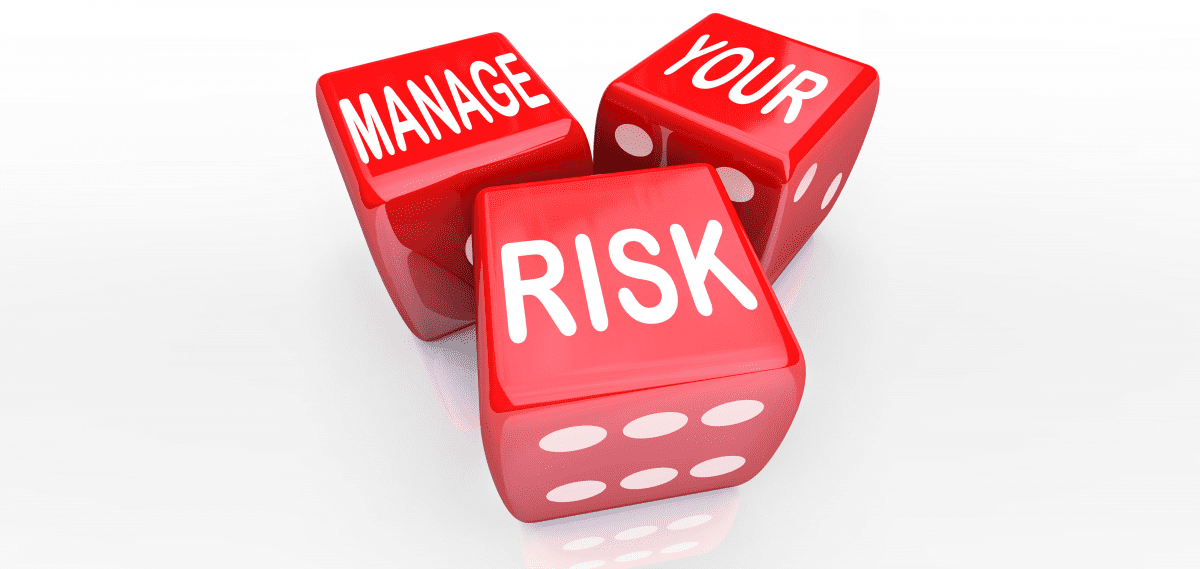What is risk management when making a mobile app game on Android? It seems a meaningless question, but some significant issues arise if developers and designers ignore the signs of taking a leap of faith. The real thing to explore here is how deep the risk crevices go and if there is a way to crawl out of them.
Why should risk management be accommodated, especially for businesses with custom build apps? The quickest answer can be to ensure that the code remains safe and hidden from competitors. However, this is barely the most thoughtful answer.
There are many risks involved in developing a mobile app, and there are some crucial steps every business team should consider when developing a mobile app. We explore some of them in this blog.
What is Risk Management?
 To get to the bottom of it all, we must clarify basic terms, such as risk management. Everyone identifies risks differently, which is why managing risks is vastly different from working strategy. The risk is not always a negative thing to make things easier to grasp. Not every chance causes a threat to the company, and it can be indeed.
To get to the bottom of it all, we must clarify basic terms, such as risk management. Everyone identifies risks differently, which is why managing risks is vastly different from working strategy. The risk is not always a negative thing to make things easier to grasp. Not every chance causes a threat to the company, and it can be indeed.
Risk management involves assessing and addressing different aspects of a company’s business model, including a budget, employment, project management, marketing, product production, and other areas that can cause immediate or down the line. Risks can range in severity and type. However, they must get identified and resolved quickly and efficiently to prevent serious business issues and future complications.
How to make sure that the risks involved with developing an app ruin the project? You make a business risk management plan. Risk identification is necessary to make a management plan for mobile app development. Here is how it unfolds.
Risk Management: Identifying Potential Risks
Potential Threats
Imagine you are a successful clothing business and want to develop a mobile app to retain customers. How would you know which steps can be potentially risky for the new venture? Is there a quantifiable metric to measure the riskiness? Blinded by the possibilities, many businesses dive into mobile app development unprepared. They do not understand the risks associated with mobile app development, heading for some unpleasant surprises.
To avoid that, we can sideline some common potential risks which can occur in any IT app development (or even software development):
- Malware and ransomware
- App/Play stores rejections
- Team turnover, etc.
Notice all of these are what we identify as possible hurdles which need to be addressed. Risk management also needs in-depth analysis to discover growth opportunities.
Risk Management Identification Routine
Ideally, a project manager identifies potential risks in mobile app development. If we strictly focus on the problem aspect of risks, we can take an example of a security breach. Here is the following course of action a project manager can take to identify the crisis:
- The problem: Security breach
- Identifying risks: Routine security check-ups and follow-ups
- Mitigation Plan: Alarms for various kinds of memory breaches
- Action Plan: Create a log-in/password recovery system, securing all passwords immediately and updating them routinely
It is always beneficial to identify risks at these junctions:
- At the beginning of the project
- Before the development phase
- Before the release
- After each critical milestone
- During roadmap planning
Most Prominent Risks to Look Out For in Mobile App Development
Here, for the sake of simplicity, we are only focusing on the harmful risks and not on the opportunities and improving points:
Building App Without Audience
What exactly is the use of an app that does not work out for anyone?
Promising entrepreneurs are those who focus on the end user more than on profitability. Ignoring end-users in the design of an application is a mistake, as it makes you make decisions that are not helpful in the long run.
Most companies think that they know what is needed. But make sure that the people doing the work knows their needs the best. One of the classic examples of getting to know your audience is through simple questionnaires.
Hodge Podge of Features
Is your mobile app a rideshare app but also has the option to get food, grocery, and medicine delivery? You might say yes, because, quite frankly, the mobile application development industry believes in feature-rich applications and tries to add as many features as possible in just a single app. The feature hodge-podge approach does not work at the start.
First, adding features that are seldom used in the app can make your app heavier and even slow down the reliability and speed time. Secondly, too many features make an app confusing and clumsy. And the last, too many features mean additional resources in terms of investment, time, and development.
So, make sure to keep the app as simple as possible. And only those essential features to the users ignore hardly used features.
Assuming Perfection
Once you set on developing an app, don’t think that your work ends here. Launch your app and wait for detailed feedback. This feedback will surely help you to get a real-time picture of the application. You will receive positive as well as negative feedback from real-time users.
Work on the harmful or destructive reviews to make your app much better, as the reviews you will get are from the real-time owners who know what type of UX/UI and functionality they want.
Nothing Unique
There are several apps available in the different app stores. So, it is sure that there will be many apps like yours. We have Uber and quite a handful of apps like Uber. Would you go out of your way to make a new rideshare app?
If you are skydiving in a rich competition environment, you must offer something special and unique concerning features. Make sure to don’t just copy the features of another app and build yours. It would not be going to earn you any positive points. Moreover, you can always take ideas from similar apps available in your niche.
 Multiple Platform App is Good, But Wait…
Multiple Platform App is Good, But Wait…
Most of us already know that two app stores are available for publishing your app – Google Play Store and App Store. If you are a more prominent company, you can think of developing an application on all these platforms simultaneously.
But if you are a mid-sized or small company, don’t go for both platforms simultaneously as it will be much more expensive. You don’t have to consider the development cost of these platforms; you also need to take care of the promotion or marketing cost. So, it is much more advisable to target them efficiently.
It would help your project select the most appropriate channel and platform and get started with it. Moreover, the Apple app store is targeted to generate more revenues, and the Google Play Store is targeted to make your application more viral.
Bad UX/UI
Good user experience and the interface are a must-have for an application. The user is most likely to engage with user-friendly apps with a good user experience; A good interface helps the user navigate with the help of your website.
For example, augmented reality (AR) employs technology to feature artificial, digital characters as real-life objects. It utilizes code or a tool to feature sounds, sights, or sensory stimuli to something you’re seeing. It is challenging to develop UI/UX for Augmented Reality.
Security Risk Management
Security breaches are nothing new and apply to any mobile application. The danger and security here lie in underestimating the need for the proper security precautions within the native applications. Updating current security measures and investing in good security tools can go a long way.
Risk Management In a Nutshell
Ignoring all the adverse risks will be fatal for any mobile app development project. Elimination, even as gradual as it can be, is highly crucial. To make a nearly flawless app for your consumers, you must not overlook the potentially disastrous consequences of adverse risks. It is always better to take precautions than to take action after the damage is done.



 Multiple Platform App is Good, But Wait…
Multiple Platform App is Good, But Wait…

